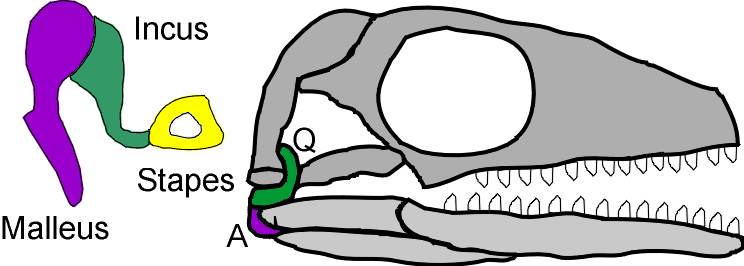|
A Critique of the "Intelligent
Design" Proposition,
or Searching for Design and Finding Evolution. by J.K. McKee |
 |

|
| The Riddled Chain | PEER into your past! | J K McKee's contact & credentials |
| Evolution FAQs and OGAs | Creationist Contradictions |
|
A Critique of the "Intelligent
Design" Proposition,
or Searching for Design and Finding Evolution. by J.K. McKee |
 |

|
Part II - Reducing "Irreducible Complexity"
If natural processes such as evolution can produce complexity, the "intelligent design" proposition needs to go further. Michael Behe tries to refine his argument by focusing not on complexity alone, but on "irreducible complexity."
| "By irreducibly complex I mean a single system composed of several well-matched, interacting parts that contribute to the basic function, wherein the removal of any one of the parts causes the system to effectively cease functioning" Behe 1996, p 39. |
Behe gives a number of examples to illustrate his point. From the world of design, he shows that a mousetrap needs a platform, hammer, spring, catch, and holding bar. If you are missing any one piece, the mousetrap is rendered useless (for catching mice). From the world of human biology, one of his attempts to demonstrate irreducible complexity is with our blood clotting system. According to Behe, the score of proteins employed in the blood clotting cascade are all necessary and could not have evolved independently. There are a number of critiques of his biochemistry already available (such as this link), so I just want to make two basic points:
1) Behe focuses on the complexity of the human blood clotting cascade and its complexity without any comparative work. He starts with an end-product of evolution with out any attempt to trace its origins. How do biological scientists test evolutionary hypotheses about systems for which there is no fossil record? By comparing our systems to those of other animals. What does the blood clotting system look like in a chimp, a mouse, a gecko, or a frog? Do all of them have the same component parts? Behe makes no attempt to answer such basic scientific questions.
2) Why focus on such overtly complex systems when we can test his basic assertions on simpler systems without getting snowed by complexity. It turns out that many simpler machines are "irreducibly complex," by the above definition. Moreover, unlike biochemists contemplating biochemical pathways and their evolution, paleontologists have a fossil record to help flesh out the evolutionary details. Take, for example, the lever.
 |
The lever is as simple a machine as exists, and it is "irreducibly complex" by Behe's definition. Without a force arm, load arm, and a fulcrum, the lever could not serve its function. The human musculo-skeletal system has many levers ... and we have the fossil evidence of how they evolved from precursor systems with other functions |
At this point is worth quoting Behe's follow-up to his definition:
| "An irreducibly complex system cannot be produced directly ... by slight, successive modifications of a precursor system, because any precursor to an irreducibly complex system that is missing a part by definition is nonfunctional." Behe 1996, p. 39 |
Is his assertion correct? Not if the precursor system had a different function. The levers in our arms can be traced back to the fins of fishes. But we need not go that far. Take a look at the human hand, a magnificent machine capable of fine movements. The dexterity of your hand depends on the coordination of parts of your brain & nervous system with the musculo-skeletal system of the upper limb. The soft pads of the finger tips backed up by flattened nails allow refined sensitivity for touch, and the opposable thumb allows us to hold our pens or manipulate objects. The hand is an irreducibly complex machine made up of component machines that are also irreducibly complex, including simple levers.
All primate hands have opposable thumbs and nails (rather than claws), but not the fine manipulative ability we have. Were the hands of non-human primates non-functional? No, they had selective advantages for hanging on to branches of the trees in which they lived. Were the predecessors of primates, lacking opposable thumbs and flattened nails, burdened by "nonfunctional" hands? Obviously not. They just used their hands differently (think squirrel).
One more example of transition of function, this one more complex (in the traditional sense) and this one a complete redeployment of a bone from one function to another. Your middle ear has three ear ossicles to help you hear: malleus, incus, and stapes. Remove one from a human ear, and you will not hear properly (if at all). Reptiles, however, hear quite adequately with just a stapes. Where did mammals get the malleus and incus? From the reptiles jaw.
 |
On the left is an illustration of an enlarged set of human ear ossicles. On the right is a reptilian skull. Note that the jaw of the reptile is made up of a number of bones. The teeth are in a bone known as the dentary -- the anatomical counterpart of our mandible. But unlike mammals, the lower jaw of a reptile is made of a number of bones (called post-dentary bones), including one called the Articular (the purple bone denoted by the A above). The Articular is aptly named, as it articulates with the Quadrate (green bone denoted by Q). In other words, the jaw joint is between the quadrate and the articular. Fossil evidence shows that the post-dentary bones became smaller in mammal-like reptiles, with the Articular eventually becoming part of the middle ear as the malleus, and the quadrate becoming the incus. This transition is confirmed by embryological developmental patterns in mammals, including humans.
Evolutionary redeployment is common -- non-functional precursor systems are nonsense.
In other words, Behe's definitions and basic tenets do not stand up to scrutiny. He gets away with such assertions by focusing on complex systems the layman has difficulty understanding, and for which there is no fossil record. It is nothing more than a smoke-and-mirrors trick.
If design is not necessary to explain the evolution of complex systems, can we find any evidence for a lack of design in the evolutionary process? Part III looks at "unintelligent design."
| Evolution/Creation FAQs and OGAs | Creationists Contradictions |
| Home page | The Riddled Chain | PEER into your past! | J. K. McKee's credentials |